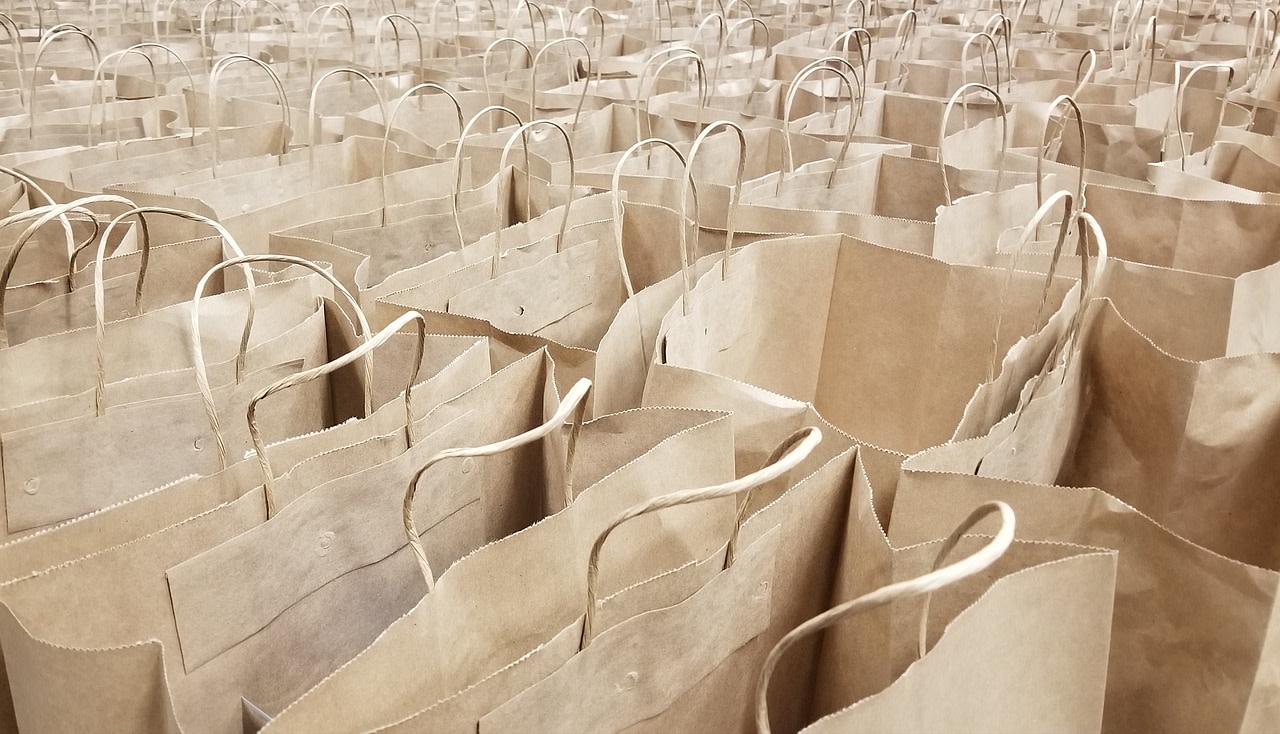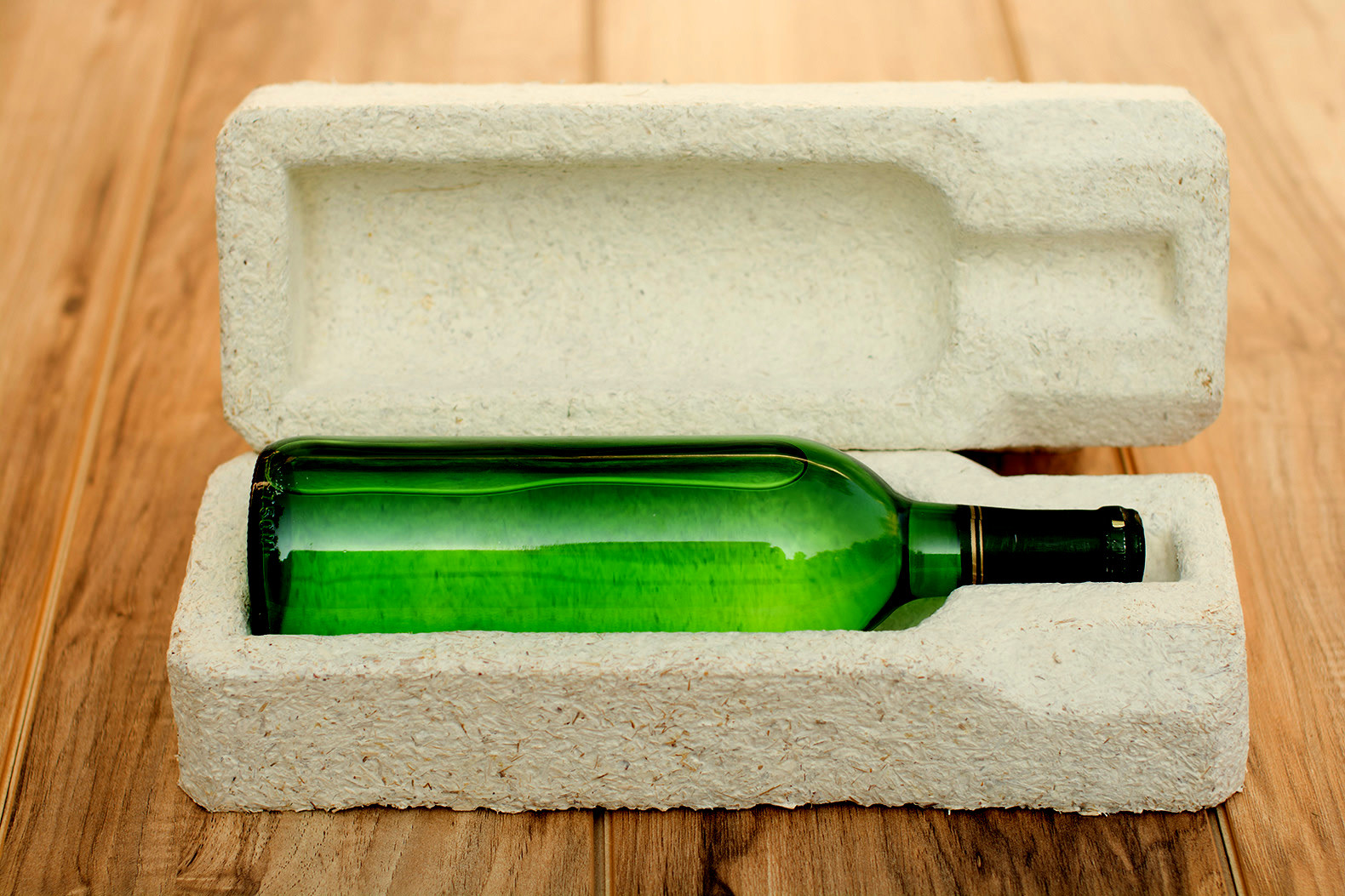The Future of Sustainable Packaging: Embracing Eco-Friendly Solutions

In the face of a world struggling with environmental degradation and climate change, sustainable packaging is emerging as an essential solution for reducing waste and safeguarding resources.
According to a report by leading market analysis company Market Research Future, the size of the sustainability in packaging materials market was estimated at USD $336.7 billion in 2021, and it is anticipated that it would increase from USD $371.4 billion in 2022 to USD $737.6 billion by 2030, with a compound annual growth rate (CAGR) of 10.30% from 2022 to 2030.
Sustainability in packaging contributes significantly to a more sustainable future by addressing environmental challenges and promoting broader environmental goals.
Some Stats for Sustainable Packaging
37% of U.S. consumers prioritise sustainability when making buying decisions, driven by increasing consumer expectations for sustainable products.
51% of supply chain professionals expect the circular economy to expand in popularity in the next two years, as a result of the pandemic.
30% of consumers are willing to pay a premium for products that deliver on sustainability claims.
Let’s take an in-depth look at its advantages and the newest advancements in eco-friendly materials used to package products. Drawing from several authoritative sources on this topic, we will explore how sustainability in packaging could revolutionise our methods for packing items up; transportation processes; consumption patterns – ultimately offering us entire new ways forward.
Featured Article: Top 5 Social Sustainability Examples You Need To Know
The State of Plastic Pollution
Packaging materials such as traditional plastic packaging, Styrofoam, and cardboard continuously wind up in landfills alongside plastic bottles and other wasteful material and thus exacerbate pollution while depleting resources. According to a report by the Organisation for Economic Cooperation and Development (OECD), between 2000 and 2019, the amount of plastic garbage generated globally more than doubled to 353 million tonnes.
Managing packaging waste presents significant challenges, impacting the environment and requiring regulatory efforts and corporate commitments to sustainability.
Almost two thirds of plastic waste is made up of plastics with a shelf life of less than five years, with packaging accounting for 40%, consumer products for 12%, and apparel and textiles for 11% of this waste. Along with this, the report also states that plastics are responsible for 3.4% of the world's greenhouse gas emissions.

What is sustainable packaging?
Sustainable packaging is designed to reduce its impact over time so it’s a key part of reducing waste, an overall packaging strategy for companies, and conserving resources. Here’s how:
First, sustainable packaging materials come from 100% recycled sources or raw, renewable resources so we reduce the demand for new, virgin materials and the overall environmental footprint.
Second, the production process of sustainable packaging is optimised to be more efficient, using less energy, less emissions and less waste. By refining the supply chain and reducing the carbon footprint at every stage – from sourcing materials to delivering the end product – companies can cut their environmental impact.
And finally, sustainable packaging is designed to be reusable, for a circular economy. Instead of throwing away recycled paper packaging, this packaging along with any other flexible packaging can be reused or repurposed, extending its life and reducing the need for new packaging. By keeping packaging in use longer, we reduce the demand for resources and waste and a more sustainable future. Beyond that, we become not as heavily reliant on the recycling industry which isn't as efficient as it could be.
The Need for Sustainability In Packaging Solutions
According to a survey by McKinsey and Co, 75% of millennial respondents admitted that they consider sustainability before making a purchase. The fact that consumers are now opting for more sustainable packaging due to climate change awareness has only spiked demand and changed consumer behavior. Furthermore, it's resulted in a push for better packaging from businesses since many are indulging in corporate packaging greenwashing.
The packaging industry plays a crucial role in adopting sustainable practices just as much as any other industry. It's important that they are responding to consumer demands and are expected to comply with regulatory changes. It would be even better if those companies started to make shifts towards sustainable materials and solutions.
Sustainable packaging is no longer just about the recyclability of materials, but also encompasses reducing any environmental repercussions throughout its lifecycle. This includes mining the necessary resources, manufacturing and shipping the packages to their destination directly, use after arrival at destination, as well as disposal or recycling when appropriate.
Benefits of Sustainable Packaging
Environmental Conservation
Sustainable materials are designed to reduce waste and contamination of the environment. These sustainable solutions leverage renewable resources, such as plant-based products, thus preserving non-renewable sources like petroleum-based plastics. With this kind of innovation in modern packaging methods, we can help mitigate some of the more obvious effects of man-made environmental pollution such as food waste.
Waste Reduction
Companies can drastically reduce the amount of waste they generate, decrease landfill buildup, and lower pollution levels by opting for recyclable or compostable packaging.
Energy Savings
By using sustainability materials, we can make a big impact on the environment by reducing energy consumption during production and transportation, ultimately decreasing the product's carbon footprint.
Brand Reputation and Customer Satisfaction
Businesses that opt for sustainable packaging practices can build their brand presence and draw in eco-friendly consumers, who are likely to stand behind environmentally responsible companies. Even forming a sustainable packaging coalition has its merits too.
Along with boosting brand reputation, companies can also boost their sales revenue by switching to climate-friendly packaging. A ProCarton survey found that one in three (31%) of marketing professionals believed that transitioning to more ecologically friendly packaging increases sales of FMCG items.
Innovations in Sustainable Packaging Materials
The packaging industry is looking at plenty of new innovations in terms of materials to make more green packaging converters.
Plant-Based Plastics (Bioplastics): Bioplastics are created from renewable sources like corn, potatoes, and sugarcane. One of these bioplastics is polylactic acid (PLA), which has the advantage of being compostable while producing significantly decreased greenhouse gas emissions when compared to traditional plastics. All in all this can limit the waste that stems from the food industry at large too.
Mushroom Packaging: Promisingly, we may be able to bid goodbye to Styrofoam and other fossil fuel-derived packaging materials with mycelium, the earthy root structure of mushrooms that can be cultivated within a few days. Mycelium is biodegradable, compostable, and promises an eco-friendly solution when it comes to packing products.

Edible Packaging: Disregard single-use plastics, and opt for packaging made from seaweed, casein (milk protein), or other edible ingredients. For instance, Ooho! has created water containers that can be eaten after use. According to a report by Market Research Future, by 2030, the market for edible packaging is anticipated to be worth USD 2.14 billion, growing at a compound annual growth rate (CAGR) of 6.79% between 2022 and 2030.
Recycled Cardboard and Paper: Repurposing recycled cardboard and paper for packaging not only saves resources but also significantly decreases energy consumption and carbon emissions associated with producing virgin materials. Adopting recyclable packaging is crucial for sustainable practices, as it helps mitigate environmental waste and aligns with increasing consumer awareness and regulatory pressures.
According to the World Economic Forum, 2021 saw the recovery of more than 50 million tonnes of paper for recycling, yielding a 68% recycling rate. Corrugated cardboard was recycled in 2021 at a rate of 91.4%. This demonstrates the increase in global awareness of recycling paper and cardboard, although this could be seen as ‘low hanging fruit’ in terms of recycling solutions.
Article: 3 Ways We Can Be Better Recyclers
Reusable Packaging: Revolutionary loop systems are leading the way in sustainable consumption, enabling shoppers to return their packaging for cleaning and reuse - thus creating circular flows free from waste.
According to a report by Future Market Insights, in 2021 the market for reusable packaging was estimated to be worth approximately USD 98.5 billion. From 2022 to 2032, the market is anticipated to expand at a respectable compound annual growth rate (CAGR) of 5.5% and reach a value of USD 177.0 billion by 2032.
Challenges and Future Directions
Despite the numerous benefits and innovations in sustainable packaging, there are still challenges that need to be addressed. According to a report by Organisation for Economic Cooperation and Development (OECD), 15% of plastic garbage is collected for recycling, however only 9% of it is recycled (the remaining 40% is disposed of as residues). Another 19% is burned in open pits, 50% end up in landfills, and 22% escape waste management systems and wind up in unregulated dumps, open pit fires, or terrestrial or aquatic habitats, primarily in less developed nations.
Enhancing sustainable packaging efforts is crucial to meet regulatory guidelines and promote a circular economy. The future of sustainable packaging depends on these guidelines.
Other challenges include the higher cost of sustainable materials, which can be a deterrent for companies and consumers and the lack of standardised regulations and certifications for sustainable packaging, which can create confusion and hinder adoption.
To overcome these challenges, governments and industry leaders must work together to create comprehensive guidelines and incentivise the adoption of sustainable packaging solutions. Education and awareness campaigns are also essential to change consumer behaviour and increase demand for eco-friendly products. Certainly, active financial support for businesses developing solutions, such as this government programme in the UK, are necessary to stimulate multiple approaches to address what is a growing issue.
The Takeaway Box
Sustainable packaging holds immense potential to reduce waste, conserve resources, and mitigate the environmental impact of our consumption habits. By embracing innovative materials such as edible and mushroom packaging, and by using recycled materials, we can challenge the notion of what ‘packaging’ actually means. Does it simply protect contents, only to then become waste? Or, can it be upcycled, eaten, or at least be initially manufactured with circularity in mind?
Despite the fact that sustainability laws for packaging have tightened across the board, the lack of clear targets and cohesive, international regulatory standards between regions make it a challenging environment for progress. However, from a design perspective, as well as the huge factor of prevention of use in the first place, there are many regulatory developments being rolled out worldwide that deserve greater attention and consideration for adoption in other geographies.
Sustainable Packaging & You
Yes, companies should adopt sustainable packaging as the norm. As consumers, we are all familiar with the tendency for the Amazons of the world to grossly over package, or the feeling that sustainable food packaging would be preferable to leaving the supermarket with more plastic than actual food. So yes, while companies can cut expenses by switching to sustainable packaging and saving energy, pressure needs to come from the consumer, something that requires us to leave our own comfort zone and push back when obvious waste is encountered.
If, as companies or individuals, we push every day to see a more logical use of resources, we will enter a future where sustainable packaging is the circular, elegant, edible, and rational norm. This shift is crucial for achieving a sustainable future, as it meets consumer demand for environmentally friendly options and drives innovation within supply chains. If the correct guidelines are followed and brands are more focussed on ESG practices then the future of sustainable packaging could be brighter.
Bookmark our Featured Articles and Environment section for more news and views on sustainability in the consumer sector.

